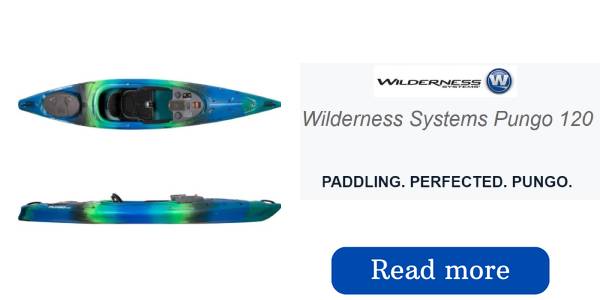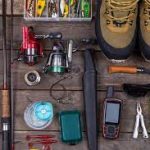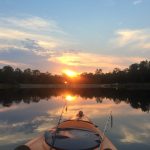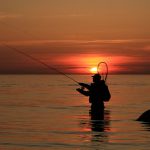A person can find information on almost any topic with a few quick clicks on a computer In today’s age of information, you can find out about almost any topic with a few clicks on a computer. New to bass fishing?
You can find thousands of articles, opinions, and facts online that can help you learn faster. Identify resources that will provide information, such as videos, podcasts, and online or print articles. There are many tournaments and fun fishermen in the area who would be willing to mentor you.
Don’t get overwhelmed; just pick a style of fishing that you’re interested in.
1. Research
Bass, both smallmouth and largemouth, are object oriented. Smallmouth bass are slightly less object oriented than largemouth bass. Largemouth bass relate to submerged wood, weeds, rock in all sizes, manmade structure in the form of docks, bridge pilings and rip-rap banks.
Bass prefer to eat crawfish, but will also eat minnows, shad, frogs, and anything else they can catch. In order to be content, aquatic creatures need access to oxygen, food, and a place to hide from predators. They also need to be able to escape to deep water if necessary.
Found almost everywhere they are a most worthy opponent.
2. Kayak Choice For Kayak Fishing
Purchasing a kayak that suits you in size, is cost effective, and of high quality is critical for fishing. When choosing a kayak, consider models that have options that will suit the fishing spots you plan to use it in.
Again a little research will go a long way. Most of us wouldn’t buy a vehicle if we couldn’t test drive it. The same goes for this. Climb in a kayak and go for a ride. Handling, casting room, paddle or pedal all matter. What about hauling and handling?
If you’re looking to transport your kayak, you have a few options. You can put it on top of your car, trail it behind your car, or put it in the bed of a pick-up truck. Be sure that you know how to properly load and unload your kayak before going out on the water.
The C-tug and other carts can help you carry your things more easily.
3. Essential Safety Tips For Kayak Fishing
No matter how old you are or how much experience you have, safety is always the most important thing. Would you put your child in the situation you’re in? The most important piece of gear to have is a life jacket.
There are several models of kayaks available that are designed for comfort while paddling, casting, and fishing. Choose wisely when investing and take into account highly visible colors if you will be share the water with larger vessels.
Have a look at some excellent options from Astral, Kokatat, and NRS.
Light poles and flags from YakAttack increase visibility. Attach a whistle to your boat in a spot that is easy to reach so that you can use it to signal other boats.
Make sure everything you carry is tethered or float so that you don’t lose anything and so that you stay afloat if you happen to fall into the water.
4. Simplify
Bass fishing can be either simple or complex, depending on what you want. Using only basic tools, minimal electronics, and functional equipment is what defines simplicity. Clutter and confusion go hand in hand.
A dry box for keys, wallet, and phone can be securely attached to the kayak, and a dry bag for other items you wish to keep dry can be stowed below the deck of many boat models. Strategically, carabiners can help secure other accessories, and a rubberized short-handled net can help you land your catch.
A lanyard secured in a spot behind your seat is more than adequate.
You can catch fish using only a few pieces of tackle, even though you might own many more. Consider storage space, necessity and cost. You can store a lot of bass baits in a couple of Plano #3600 plastic tackle boxes.
5. Knowing Nature
An important part of being safe and successful when bass fishing is understanding how nature works. You’re in hot pursuit of a wild creature. Every type of weather affects the activity of all species of bass.
Learn about the conditions you’ll be fish in to stay safe and increase your chances of catching bass. Air and surface water temperatures are important clues. Bass will be in pre-spawn mode when the water temperatures are between 50 and 62 degrees.
They will be eating a lot during this time in preparation for spawning rituals.
Smallmouth bass are the first to spawn on beds, followed by spots (also known as Kentucky bass), and finally largemouth bass. At about 70 degrees and a couple of weeks after spawning finishes, they move off to deeper water haunts.
Wind direction is a good indicator of what kind of weather you can expect in the near future. A northerly wind will bring cooler temperatures, a southerly wind will bring warmer temperatures, an easterly wind could bring some unstable weather patterns, and a westerly wind seems to bring cooler temperatures with it.
High winds and lightning are the bane of the bass anglers because they create waves that make it difficult to fish. GET OFF THE WATER.
6. Essential Bait and Rod choices for Kayak Bass Fishing
Baits
There is an overwhelming amount of colors and configurations of crankbaits, spinnerbaits, and soft plastics. You don’t have to have them all.
A selection of bass baits will be effective and even deadly for bass. Single drip lures offer less of a chance of being embedded in anything then lures with multiple hooks. You can catch a lot of fish using highly effective models of spinners, jigs, topwater buzzbaits, and soft plastic rigs.
To rig worms, craws, and creature baits using the Texas rig, which is popular and highly productive yet simple, start with plastics. It starts with a conical slip sinker, usually lead with a hole drilled through it and ranging in weight from 1/8th ounce to a hefty one ounce version (3/8ths is standard for me).
Attach your bait to the line by first sliding it onto the line, with the small side first. The size of the hook you use should vary depending on the overall size of your bait, and can range from 2/0 to 6/0.
To tie two lines together, use either the Palomar knot, the Clinch knot, or the blood knot. and other options for Exploration You should have a few crankbaits in your bass box, three necessary patterns/colors and other options for Exploration.
- Shad
- Crawfish
- Charteuese black back.
- Done!
You should add a few rubber-legged jigs in a couple of weights and colors to your fishing tackle. Topwater lures and minnow-imitating baits are good options during the warmer months. I decided that if I hadn’t used a lure or bait in a year, and it hadn’t gotten wet or caught a fish, I would get rid of it.
In no time, you’ll have a favorite bass bait that works for you and is more important to the fish.
Rods
I have kayaks that are equipped with fishing rods that range in length from 5 ½ feet to 7 ½ feet. You should use a spinning combo if you want to use longer casts, lightweight lures, and light line.
The following text is about lures that are 1/8 ounce in size and can be launched on four to six pound test open faced spinning reels. I prefer to use a baitcaster that is more muscular and has some power when casting and retrieving the bulky bass baits.
Instead of using regular monofilament fishing line, you can use a heavier monofilament line that is 12-16 pounds. Another option is to use a braided line that is 20-30 pounds and is very strong and sensitive. Go armed to battle bruiser bass.
At any given time, there are usually two baitcasting outfits and a spinning set up ready to go at my feet. If there is enough space and the right kind of structure, I will add another rod.
8. AVOID OVERLOADING YOUR KAYAK
Kayak fishing can require a lot of gear, so it’s easy to accidentally overload your kayak.
This means that if a kayak has a maximum capacity of 400 pounds, you should only load it down with 320 pounds of gear. If your boat can hold up to 500 lbs, then the total weight of you and your gear should not exceed 400 lbs for the best performance.
Be careful about what you bring with you when you go kayaking, so that you don’t accidentally make your kayak too heavy.
Remember that you will probably end up with more fish than when you started fishing for the day.
It is best to keep the weight of you and your belongings at 70% or less of the total weight your boat can hold. This will give you plenty of space for any fish you catch.
9. STAY ORGANIZED
Kayak angling can require a lot of gear, as we’ve mentioned. Keeping oneself organized is very important when boating.
Before you start kayak fishing, it is important to have a system in place to stay organized. Track mounts allow you to keep your devices close by on your boat. During fishing, having an organized fishing crate can save you Tension and annoyance.
The most important thing is to find a way of organizing your boat that works well for you. One person’s organization system might not work for another person. Experiment with different options until you find the perfect system for your paddling style.
10. LEAVE YOUR EXPENSIVE FISHING RODS AT HOME
But we urge you to take it easy! We urge you not to bring your new rods on your kayak fishing trips. Although we don’t want to say it, it’s probably a good idea to leave your expensive rods at home when you first start fishing.
When you’re just starting out kayak fishing, you have enough to keep track of without worrying about damaging your costly fishing rods.
I would suggest leaving your expensive rods at home until you have dialed down your system and have a better understanding for how kayak fishing works for you. If you’re feeling more confident on the water, you can think about packing your fishing rods for a future trip.
11. SECURE YOUR GEAR
The last thing you want while paddling on a lake, river, or ocean, is for your fishing gear to fall off. It can be difficult to keep track of all your gear when the wind and waves are working against you.
You should always be focused on securing your gear when kayak fishing. It is best to keep your equipment locked up or tied down so it does not fall off the boat.
When you’re not using them, make sure to keep your rods in a safe place so they don’t go flying around the boat. When you’re taking a break, put your rods in their dedicated holders rather than setting them down on the deck of your boat. Trust us, you’ll be happy that you did.
12. PRACTICE PADDLING WITH ONE HAND
Kayak fishing is all about multi-tasking. Paddling with one hand is a good way to practice multitasking.
We are not suggesting that you need to be able to paddle with one hand for a long time. Although it is not necessary, being able to control your drift with one hand while you cast lines is very helpful.
The key here is practice. If you want to be able to paddle with one hand, you need to practice it until it becomes relatively easy to do.
13. LEARN TO CAST ONE-HANDED
It is also helpful to know how to cast a fishing rod with one hand.
If you are only using one hand to paddle, your trips will be more efficient. Casting with one hand means that you can keep your paddle in your hand, so you don’t have to keep setting it down.
A more efficient casting will increase your chance of catching a fish after being on the water for hours.
14. USE A PADDLE LEASH
Having a backup paddle is essential in case you lose your main one. While kayak fishing it is strongly suggested that you use a paddle leash.
A leash that connects your paddle to your boat helps reduce the chances that your paddle will drift away. These devices are essential for kayak fishermen who are often required to put their paddles down for a brief time.




